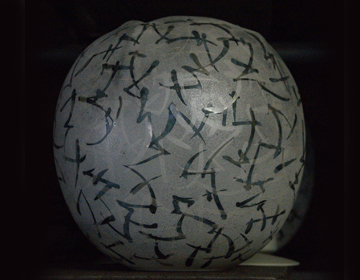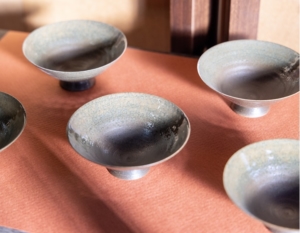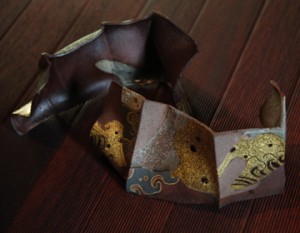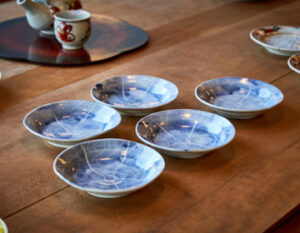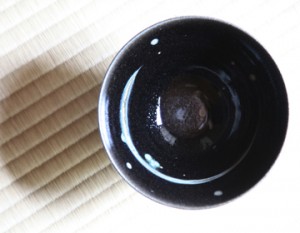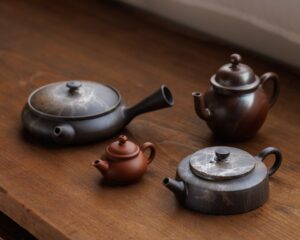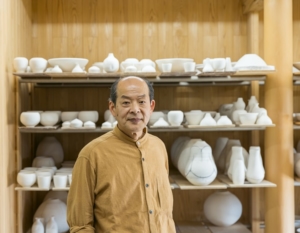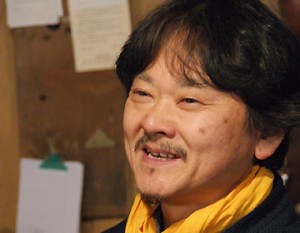From utensils to objects
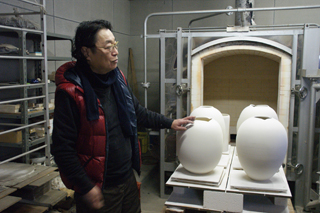
Mamoru Teramoto is decorated with many awards and highly regarded as a potter, not only in Japan but also overseas. His works are characterized by the refined rounded shape with silver color and inlay, giving a refined impression. The drawings that he practiced in Kutani is nothing grandiose, but subtle patterns with unexpected surprises in the tone of colors that add sharpness to the work. Another characteristic prevalent about Teramoto is that he makes big pieces like monuments. In fact at the time of the tour, he was constructing an object as long as 6 meters. It was still laid down on the floor, but it was already quite impressive. It will be interesting to see what kind of atmosphere the finished work brings about. .
Facing the essence of pottery in Kasama
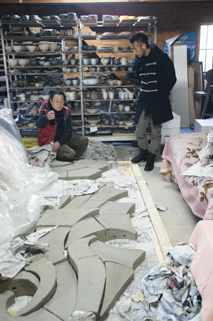
It was in 1976 that Teramoto built a kiln in Kasama. Teramoto is not originally from Kasama. Asked why he had a kiln in Kasama, the answer was ”I thought I would have more freedom with my work.”. Kasama-yaki itself has a long history, when Teramoto made his kiln, there were not many old kilns. ”I thought that would free me from any fixed format and create freely. That’s why I chose Kasama.”
Kasama was known for its high-quality soil, but recently the volume of quality soil that could be collected had dropped, so material soil comes from all over the country. Soil locality is no longer the definition of the locality of pottery. ”It just means that someone who lives in Kasama is creating the work. I have a friend who lives in Roppongi (Tokyo) and he calls his work Roppongi-Yaki. ” Teramoto told us. As far as he is concerned , he has a workplace in Kasama where he can can concentrate on his work and challenge all kinds of possibilities. It’s that simple.
Colors generated by natural coincidence
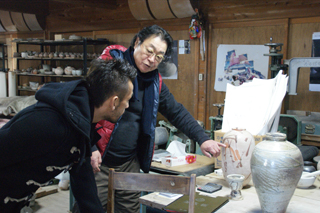
In addition to electric and gas kiln, Teramoto’s workshop is equipped with a climbing kiln. A climbing kiln makes use of a slope with several rooms, each connected, and all rooms are kept at a high temperature. It uses firewood instead of gas or electricity to heat the kiln, which generate ashes. The ashes adhere to the work, and the alkaline ashes react with the iron content of the soil. That generates a red color on the work. So it is impossible to get this red color with an electric or gas kiln. However, as it is not possible to look into the kiln, the outcome depends on experience and intuition.
Looking at the appearance of the climbing kiln, Nakata said , ”I would like to see this in action. I really want to make a bowl and bake it,” Teramoto quickly replied, ”Once you do it, you will get hooked. ” The fun part is that you don’t have 100 % control over your own work.
Depending on how the ash falls on the work, you get different results. The way heat is transmitted, how the flame hits the work, all lead to different a finish. This unpredictability and imagining what the pieces will look like, make the opening of the kiln an exciting event for the artist himself.




